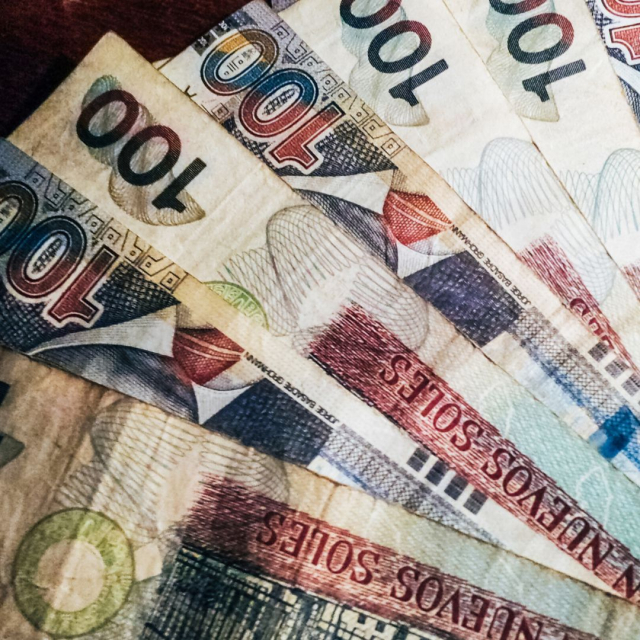Peru's official currency, known as the sol, is an essential component of the country's economy and national identity. Throughout Peruvian history, the monetary system has experienced numerous transformations, reflecting political, economic and social changes.
History of Peruvian Currency
The history of currency in Peru is rich and complex, spanning from the first pre-Columbian civilizations to contemporary times.
Pre-Columbian and Colonial Coins
Before the arrival of the Spanish, Andean civilizations used barter systems and various goods as a form of exchange. The Tahuantinsuyo, Inca empire, did not use metallic currency, but was based on barter and a system of redistribution of goods.
With the Spanish conquest in the 16th century, the use of silver and gold coins was introduced. The Lima Mint, established in 1565, began minting coins that were used both in Peru and in other parts of the Spanish Empire. Colonial currencies, such as the real and the escudo, were fundamental in the viceregal economy.
Independence and First National Coins
The independence of Peru in 1821 marked the beginning of a new chapter in the country's monetary history. In 1825, the first national monetary system was created under the government of Simón Bolívar, with the Peruvian peso as the unit of account. This initial period was turbulent, with numerous reforms and monetary issues due to political and economic instability.
The Silver Sun and the Golden Sun
In 1863, the silver sol was introduced, replacing the peso. This currency, equivalent to the pound sterling, remained until 1931, when the country adopted the gold sol due to the depreciation of silver. The golden sol was used until 1985, when it was replaced by the inti due to inflation.
The Inti and the New Sol
The Era of Inti (1985-1991)
The inti was introduced in 1985 in an attempt to control inflation and stabilize the economy. However, the 1980s were a period of economic crisis, with hyperinflation rapidly eroding the value of the inti. In 1990, inflation reached astronomical levels, leading to the need for new monetary reform.
The New Sun (1991-2015)
In 1991, under the government of Alberto Fujimori, the new sol was introduced, replacing the inti with an exchange rate of 1 million intis for one new sol. This new currency was part of a package of economic reforms that included market liberalization, macroeconomic stabilization and the reduction of inflation. The Nuevo Sol remained stable for more than two decades, helping to restore confidence in the Peruvian monetary system.
The Current Sun
Revaluation and Continuity
In 2015, the new sol was renamed simply "sol", reflecting the country's economic stability and the strength of its currency. The sol continues to be the official currency of Peru, with bills and coins circulating in various denominations.
Design and Security
The Central Reserve Bank of Peru (BCRP) is responsible for the issuance of banknotes and coins. Today's banknotes feature a number of advanced security features to prevent counterfeiting, including things like holograms, special inks and watermarks. The designs of the banknotes and coins also reflect the rich cultural and natural heritage of Peru, with images of historical figures, native flora and fauna.
Economic and Social Impact of the Sun
Macroeconomic Stability
The introduction of the sun has been crucial for the macroeconomic stability of Peru. Since the adoption of the new sol in 1991, the country has experienced sustained economic growth, with controlled inflation rates and a favorable environment for foreign investment.
Financial Inclusion
The stability of the sun has also facilitated financial inclusion. Access to banking and financial services has expanded significantly, allowing more Peruvians to participate in the formal economy. Government and private programs have promoted banking access and the use of financial technologies to reach traditionally underserved populations.
International Trade
The sun plays a fundamental role in Peru's international trade. The stability of the currency has allowed Peruvian companies to compete more effectively in global markets. Additionally, the country has signed numerous free trade agreements that have expanded export and import opportunities.
Challenges and Future Perspectives
Economic Challenges
Despite the successes achieved, the sun and the Peruvian economy face several challenges. The dependence on the export of raw materials makes the country vulnerable to fluctuations in international prices. Furthermore, labor and economic informality remains a significant problem, limiting the potential for growth and inclusive development.
Innovation and Modernization
The BCRP and other institutions are working to modernize the country's monetary and financial system. Digitizing financial services, promoting electronic payments and improving banking infrastructure are key areas of focus. The COVID-19 pandemic has accelerated the adoption of financial technologies, opening new opportunities for innovation.
Digital Currencies
The BCRP is also exploring the potential of central bank digital currencies (CBDC). While there are no immediate plans to introduce a digital currency, the bank is investigating its implications and potential benefits for the Peruvian economy.
As the country faces new challenges and opportunities, modernization and innovation in the monetary system will be crucial. Stability and trust in the sun will continue to be fundamental pillars for the sustainable development of Peru, reflecting the rich heritage and potential of this vibrant South American country.
